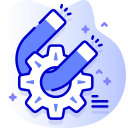Personalized Learning Pathways in Web Design for Language Acquisition in English
Personalized learning pathways represent a transformative approach to mastering the English language, especially when facilitated through thoughtful web design. By tailoring digital learning experiences to individual needs, strengths, and preferences, learners are empowered to progress at their own pace and style. The integration of adaptive technologies and user-centric design principles creates engaging environments that naturally foster motivation and achievement in language acquisition. In the following sections, we explore how web design can effectively support personalized learning, the essential elements that drive user engagement, the role of assessment and feedback, and how future trends will reshape this dynamic field.
The Foundations of Personalized Digital Learning
Adaptive Content Delivery
Adaptive content delivery is central to personalizing language learning experiences. Through algorithms that analyze users’ strengths and weaknesses, web platforms can present exercises, lessons, and multimedia tailored to each learner’s current proficiency and preferred learning modalities. This not only keeps the learner challenged at just the right level but also makes the process more enjoyable and less intimidating. Learners encounter new vocabulary, grammar, and cultural nuances in contexts that make sense for their personal journey, bridging gaps and boosting both confidence and competence. Thoughtful adaptive delivery can also account for learning speed, offering accelerated challenges for advanced students or remedial support for those needing extra help.
Learner Autonomy and Goal-Setting
Empowering learners to take ownership of their educational trajectories is a cornerstone of effective personalized pathways. Web design plays an essential role by incorporating features that allow learners to set, monitor, and adjust their goals as they progress through their English acquisition. Customizable dashboards, progress trackers, and the ability to revisit or skip certain content facilitate a sense of autonomy and responsibility. The result is greater motivation: learners are more likely to engage consistently and deeply with material that feels relevant to their aspirations. Supporting autonomy also means providing diverse resources and optional enrichment activities, helping each user carve out a path that best matches their interests and ambitions.
Accessibility and Inclusivity in Design
For personalized language learning to reach its full potential, web design must be intentionally accessible and inclusive from the outset. This involves more than just complying with technical standards; it means anticipating and respecting the vast spectrum of learning differences, cultural backgrounds, and technological access levels. Features like adjustable text size, screen-reader compatibility, and multilingual support ensure that every learner has equitable access to educational resources. Inclusive design also celebrates and incorporates users’ unique perspectives, making language learning spaces richer, more dynamic, and ultimately more effective. By foregrounding accessibility, web designers help all users find their place within the English language learning journey.
Previous
Next
Assessment, Feedback, and Continuous Improvement
Diagnostics and Formative Assessments
Diagnostics and formative assessments serve as the essential starting point for tailoring a learner’s web-based experience. With initial quizzes, self-assessments, or interactive placement tests, platforms gather data about users’ existing skills and areas for development. Ongoing formative assessments, embedded seamlessly into lessons, continually monitor progress without overwhelming the learner. These assessments are not merely evaluative; they provide teachable moments, revealing gaps and strengths in real-time. As a result, learning materials and pathways can be recalibrated to ensure each user receives precisely what they need, reducing frustration and accelerating growth in English language proficiency.
Personalized Feedback Loops
Clear, timely, and personalized feedback is paramount for meaningful progress in language acquisition. Web design can deliver instant feedback through automated corrections, model answers, and explanatory hints tailored to a learner’s responses. Beyond simple right-or-wrong assessments, platforms may offer nuanced tips and encouragement, helping learners understand their mistakes and avoid them in the future. Personalized feedback also celebrates milestones, reinforcing positive behavior and resilience. By leveraging data analytics and artificial intelligence, systems can ensure feedback is not generic but truly individualized, maintaining motivation while guiding learners ever closer to their language goals.
Tracking Progress and Adjusting Pathways
Effective web platforms provide learners with transparent tracking tools that visualize progress, highlight achievements, and indicate areas in need of attention. These features empower users to reflect on their learning journey, identify trends, and set new goals. For instructors and developers, data-driven insights inform curricular adjustments and allow for the introduction of targeted interventions when necessary. This ongoing process of monitoring and adjustment ensures that personalized pathways remain relevant and responsive, accommodating life changes or fluctuations in pace. Ultimately, dynamic tracking and adaptation forge a pathway that evolves in tandem with the learner’s growing mastery of English.
